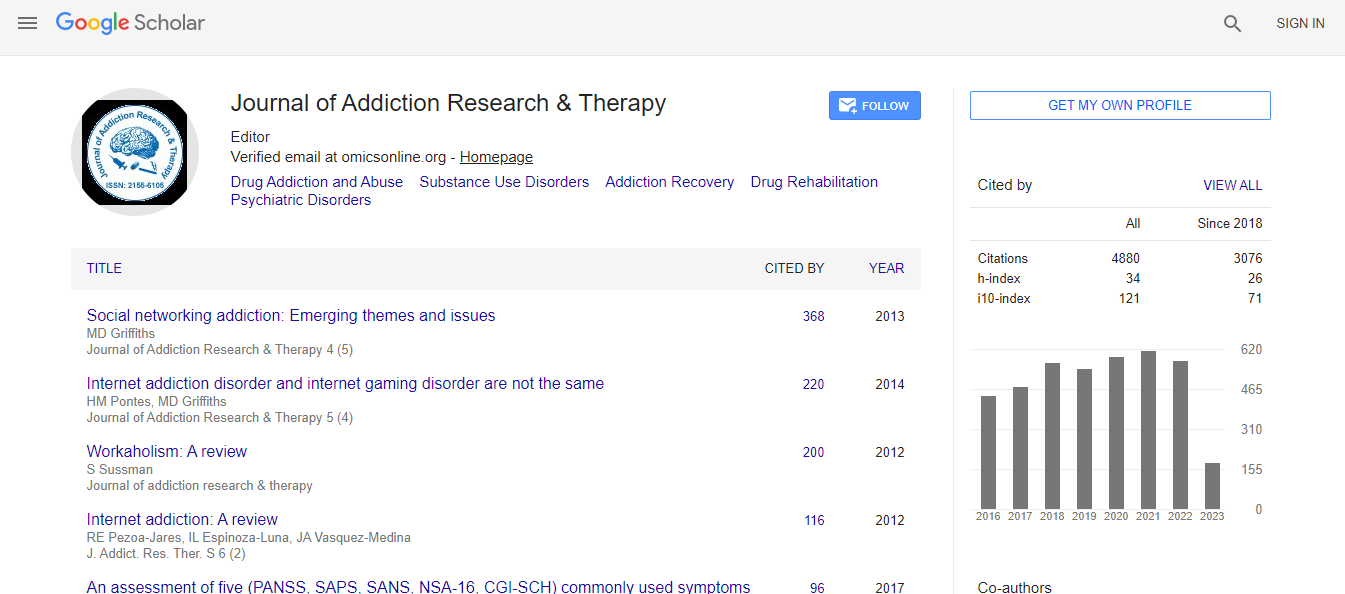Research Article
Impact of Sex and Gonadal Hormones on Cocaine and Food Reinforcement Paradigms
Kerry A. Kerstetter1* and Tod E. Kippin1,21Department of Psychological and Brain Sciences, USA
2Neuroscience Research Institute, University of California at Santa Barbara, Santa Barbara, CA 93106-9660, USA
- *Corresponding Author:
- Kerry A. Kerstetter
Department of Psychological and Brain Sciences
University of California, Santa Barbara, Santa Barbara
California 93106-9660, USA
Tel: (805) 893-2459
Fax: (805) 893-4303
E-mail: kerstetter@psych.ucsb.edu
Received September 20, 2011; Accepted December 15, 2011; Published December 20, 2011
Citation: Kerstetter KA, Kippin TE (2011) Impact of Sex and Gonadal Hormones on Cocaine and Food Reinforcement Paradigms. J Addict Res Ther S4:002. doi:10.4172/2155-6105.S4-002
Copyright: © 2011 Kerstetter KA, et al. This is an open-access article distributed under the terms of the Creative Commons Attribution License, which permits unrestricted use, distribution, and reproduction in any medium, provided the original author and source are credited.
Abstract
Men and women express sexually dimorphic patterns of cocaine abuse, such that women progress faster from initially trying cocaine to becoming dependent upon the drug and display a greater incidence of relapse. Sex differences in response to cocaine are also seen in the laboratory in both humans and animal models. In this review, animal models of cocaine abuse that have reported sex differences in appetitive reinforcement are discussed. In both human and animal studies, sex differences in the subjective and behavioral effects of cocaine are often related to the female reproductive cycle and ovarian hormones. As a comparison, food reinforcement studies have shown the opposite profile of sex differences and the impact of sex steroids on food intake and response rate. In contrast, limited attention has been given to “choice” models in rodents of either sex, however, our recent studies have indicated a role of sex and estrogen in cocaine choice over food with intact females, and OVX females treated with estrogen, choosing cocaine significantly more than males. Interestingly, estrous cycle phase does not seem to impact cocaine choice as it does response rate in single-reinforcer studies, suggesting that genomic rather than neurosteroid effects of estrogen modulate sex differences in this model. Future studies should more fully explore the impact of sex hormones on concurrent reinforcement and discrete choice models of addiction.

 Spanish
Spanish  Chinese
Chinese  Russian
Russian  German
German  French
French  Japanese
Japanese  Portuguese
Portuguese  Hindi
Hindi 
